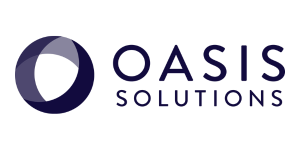
In the face of stiff market competition and expanding requirements for faster responses, products, and solutions, it is now more important than ever for businesses to elevate their software systems to modern standards. The legacy systems that have adequately served companies for decades are reaching a maturity point and need to be reevaluated.
Many organizations take the path of least resistance by relying on legacy applications due to the expense and risk associated with upgrading, but with each passing day, the risks of simply ignoring system modernization grow more apparent. Here are 4 major risks of maintaining legacy software that pose a serious threat to the health and longevity of your business.
Security vulnerabilities
Legacy systems present a huge security risk due to no longer being fully supported by the vendor or manufacturer. The problem with unsupported software is that it doesn't receive the updates and security patches required to protect against a constantly evolving threat landscape where a single vulnerability can compromise a company’s entire network.
This puts your data and your customers’ data at serious risk. For businesses operating under stringent regulatory compliance requirements, this can result in costly audits and devastating fees and penalties.
High Maintenance Costs
Although organizations may be hesitant to invest in new software, in the long run, their legacy systems will cost them more to run and maintain without the added benefit of innovative technologies. Old applications often suffer a higher failure rate due to the fact they are no longer being supported and don’t benefit from updates and bug fixes to address stability issues. When these systems crash, they require the attention of an internal IT department or demand calling in a third party to help resolve the matter. Downtime eats away at employee productivity and in the worst case can lose you customers.
Incompatibility with other technologies
Many legacy applications were built to be standalone programs and were never designed to integrate with other pieces of software. As companies change and grow, their software must be able to grow and develop at the same rate. Upon identifying the emerging need for specific software, they will face serious roadblocks when they discover that their existing legacy systems are incapable of integrating with new technologies. This bottleneck drastically reduces the flexibility afforded to your organization by limiting the number of tools at your disposal.
Lack of critical information
Cloud computing and advanced analytics are revolutionizing the way companies do business. Those at the head of the pack are responding to client and market demands faster but are also proactively taking steps to get ahead by leveraging data insights and business intelligence to position themselves for future success.
Unfortunately, legacy software was not designed with today’s marketplace in mind and struggles to provide modern businesses with the level of data visibility needed to make timely and accurate decisions. While modern applications come equipped with visualization and reporting tools focused on ease-of-use, these features are absent in legacy systems which severely limits agility and robs you of the opportunity to utilize the power of data-driven decision making.
Your legacy systems may have fueled your growth in the past, but today they could be hurting more than they are helping. The longer you wait to employ a digital transformation strategy, the greater the risk, so start planning today. Need help determining if a system upgrade is right for you? Contact us for a process analysis and software evaluation.



